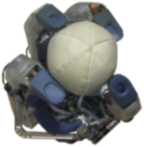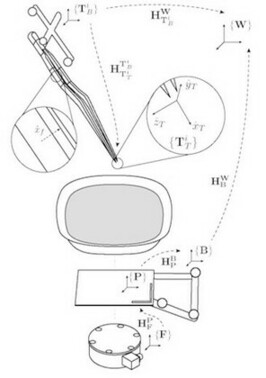Compliance in multifingered hand improves grasp stability and effectiveness of the manipulation tasks. Compliance of robotic hands depends mainly on the joint control parameters, on the mechanical design of the hand, as joint passive springs, and on the contact properties. In object grasping the primary task of the robotic hand is the control of internal forces which allows to satisfy the contact constraints and consequently to guarantee a stable grasp of the object. When compliance is an essential element of the multifingered hand, and the control of the internal forces is not designed to be decoupled from the object motion, it happens that a change in the internal forces causes the object trajectory to deviate from the planned path with consequent performance degradation. This paper studies the structural conditions to design an internal force controller decoupled from object motions. The analysis is constructive and a controller of internal forces is proposed. We will refer to this controller as object motion- decoupled control of internal forces. The force controller has been successfully tested on a realistic model of the DLR Hand II. This controller provides a trajectory interface allowing to vary the internal forces (and to specify object motions) of an underactuated hand, which can be used by higher-level modules, e.g. planning tools.
@inproceedings{PrMaAgWi-icra12,
Author = {Prattichizzo, D. and Malvezzi, M. and Aggravi, M. and Wimboeck, T.},
BookTitle = {{IEEE International Conference on Robotics and Automation (ICRA)}},
Title = {Object motion-decoupled internal force control for a compliant multifingered hand},
Address = {St. Paul, MN, USA},
Year = {2012},
Pages = {1508--1513}
}

